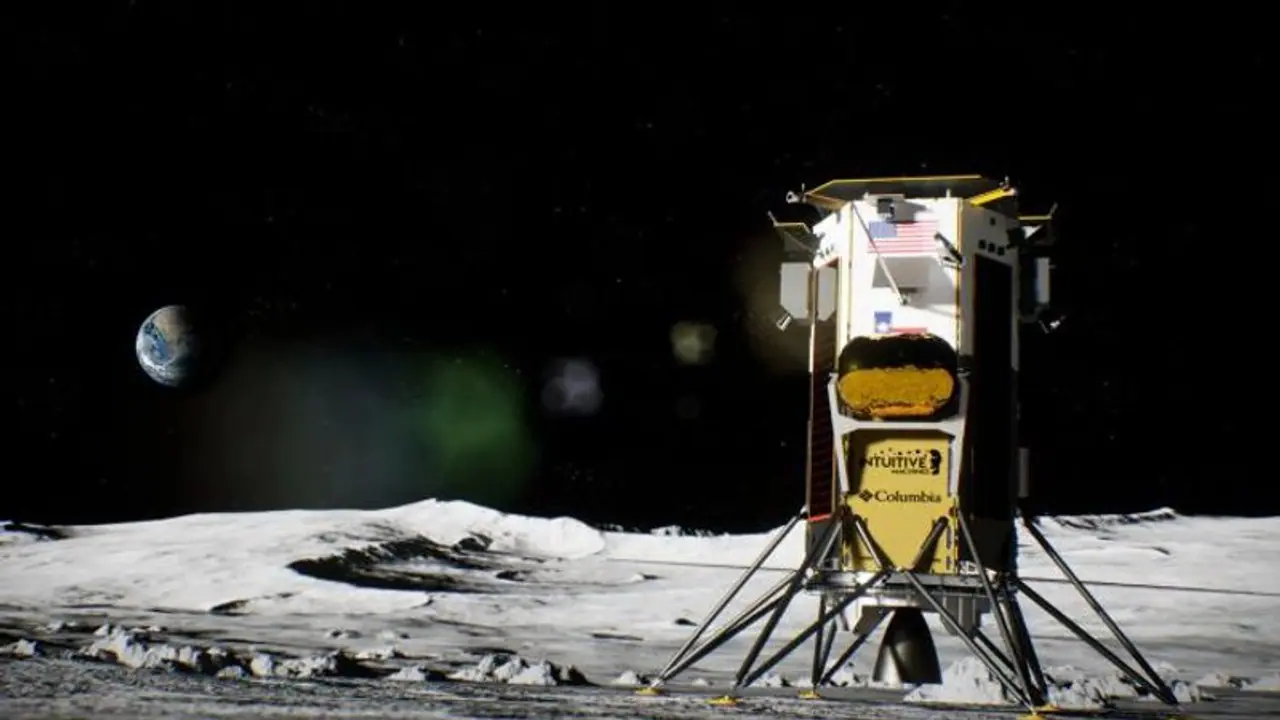Riding on a Falcon 9 rocket by SpaceX, the mission aims to make history as the first American moon landing in over 50 years and the first by a private company. Equipped with scientific instruments from NASA, Odysseus plans to land in Malapert A crater near the moon's south pole. Girish Linganna reports
An aerospace company from Houston named Intuitive Machines sent a moon lander to space from Florida on February 15. This mission aims to be the first American landing on the moon in over 50 years and the first one done by a private company. The Nova-C lander, called Odysseus, made by the company, launched at 1.05 am Eastern Standard Time (0600 GMT) on a Falcon 9 rocket with two stages. The rocket, operated by Elon Musk's SpaceX company, took off from KSC's Pad 39A, NASA's Kennedy Space Center in Cape Canaveral.

A live video from NASA and SpaceX online showed the big, 25-storey tall (70 mts) rocket blasting off from its launch area and flying into the night sky above Florida's Atlantic coast. Around 7.5 minutes after launch, the first part or the stage of the rocket returned to Earth, landing upright at Cape Canaveral Space Force Station, located right next to the NASA launch site.
According to SpaceX, Ithe rocket booster (1st Stage) has been used and recovered 18 times, which is just one time less than the highest number of uses and recoveries SpaceX has achieved with any booster. This record of most reuses was established in December.
Meanwhile, the upper part ( 2nd Stage) of the Falcon 9 rocket continued to move up into the sky. About 48.5 minutes after taking off, as expected and approximately. about 139 miles (223.5kms) above Earth, it placed Odysseus into an orbit path that will take it to the moon. The lander, which weighs 1,490 pounds (675 kilograms), made its first communication with mission control a few minutes after that.
The plan was for Odysseus to arrive at its destination in 7 days. It's scheduled to land on February 22 in Malapert A crater, close to the moon's south pole. This small crater is around 190 miles (300 kilometers) away from the south pole of the moon. The spacecraft is following the same route to the Moon that the Apollo missions did, planning to cover the distance of 384,400 kilometers from Earth within eight days.
If the mission goes well, it would be the first time a US spacecraft has made a controlled landing on the moon since the last manned Apollo mission in 1972. It would also be the first time a private company has achieved this.
Odysseus is equipped with six instruments from NASA specifically for the IM-1 mission. These instruments were added to the spacecraft under a contract with NASA valued at $118 million. In addition to the cost of the contract, NASA also invested an extra $11 million in the development and construction of this scientific equipment.
This investment was made to ensure that Odysseus carries the necessary tools to complete its mission objectives, as confirmed by NASA officials.
Here's a quick overview of the scientific instruments from NASA:
1) ROLSES (Radio Observations of the Lunar Surface Photoelectron Sheath): is an instrument designed to study and understand the behaviour of electron plasma and radio waves around the area where IM-1 lands. This means it will look at how electrons move and interact near the landing site and how radio signals behave in that environment.
2. LRA (Laser Retro-Reflector Array): The LRA is a small group of reflectors that acts like a marker on the moon. It will help future spacecraft land more accurately by giving them a specific spot to aim for.
3. NDL (Navigation Doppler Lidar for Precise Velocity and Range Sensing): The NDL is a tool that uses LIDAR (light detection and ranging) which is a way to measure distances using light, to collect very accurate information while Odysseus is landing. It helps understand exactly how fast and from what distance Odysseus is moving during its approach to the moon's surface.
4. SCALPSS (Stereo Cameras for Lunar Plume-Surface Studies): SCALPSS consists of stereo cameras that will observe how the dust and rocks on the moon are affected by the blast of exhaust from Odysseus when it lands. By studying this, the information collected will help design better landers for future Artemis missions, making sure they can land safely and effectively on the moon's surface.
5. LN-1 (Lunar Node 1 Navigation Demonstrator): LN-1 is a small device that acts like a radio signal beacon to test self-guiding technology for spacecraft. This technology could help future moon vehicles and landers know where they are without help, similar to how GPS works on Earth. The goal is for LN-1 to be a step towards creating a big GPS-like system for use on the moon and in space around it.
6 RFMG (Radio Frequency Mass Gauge statement): The RFMG is a tool that measures the remaining fuel in Odysseus using radio waves, which is a challenging task in the low-gravity conditions of space.
Odysseus is also taking six different items for commercial purposes for various clients. This includes a test by Columbia Sportswear of their "Omni-Heat Infinity" insulation material on this mission. Besides other items, the mission is carrying some artwork by Jeff Koons and a special storage system designed to keep all human knowledge safe in case of a disaster on Earth. Also on this mission is a camera called EagleCam, made by students from Embry-Riddle Aeronautical University. This camera will separate from the spacecraft as it gets close to the moon and try to take pictures of it landing.
